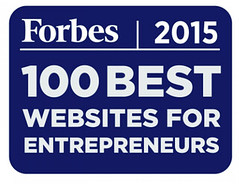In Knowledge@Wharton
Theodore "Ted" Levitt of Harvard Business School set the marketing world abuzz in 1983 with a bold prediction: Globalization had arrived, and before long global companies would be selling products and services in the same way everywhere on earth. Levitt's forecast was compelling -- and more than a little daunting for executives wondering how they would go about adapting to this brave new world of monolithic brands.
More than 20 years later, however, Levitt's prediction [Laurel here ... the name of Ted's powerful essay is "The Globalization of Markets" and even before Ted (1982), professors Thomas Hout, Michael Porter and Eileen Rudden wrote an equally dynamic case study called "How Global Companies Win Out"] has not come to pass, according to Wharton marketing professors George S. Day and David J. Reibstein, who note that only a handful of truly global brands exist today, despite the increased globalization of markets.
Which global brands are most valuable? What are the various levels of being truly global? Is it achievable or desirable to go global? Do you have to adapt your product or service to the local marketplace? Find out here.
Wednesday, May 18, 2005
Subscribe to:
Post Comments (Atom)



















No comments:
Post a Comment